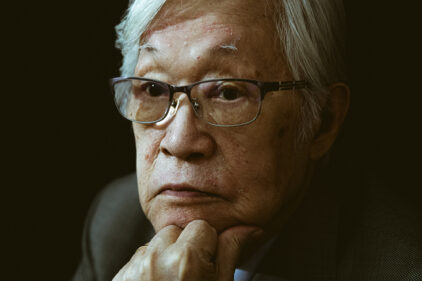Cannes is all about the thrill of the new: What makes hundreds of scribes schlep every morning to yet another 8:30am screening is the knowledge that they are the first audience for a slew of the year’s key films. And yet, cinema’s past is very much present on la Croisette. Aside from the outdoor screenings held every night on the beach (“Jaws” was a particularly inspired choice), there’s an entire section designed to honoring the gems of the past: Cannes Classics.
Consisting entirely of new restorations of films widely known or deserving rediscovery, Cannes Classics is a cinephile’s delight. This year, the titles range from “The Apprenticeship of Duddy Kravitz” to Satyajit Ray’s “Charulata,” with a fiftieth anniversary screening of Joe Mankiewicz’s ill-fated “Cleopatra” (1963) still to come. Yesterday afternoon, marking 35 years that have passed since its Cannes premiere in 1978, a freshly restored version of Billy Wilder’s “Fedora” was shown for the first time. Long available only in faded prints, scratched so severely the image was on the verge of bleeding, the movie can finally get its due as an important late work of a great director (DVD and Blu-ray releases are rumored to follow soon).
The screening was preceded with an appearance by actors Marthe Keller and Mario Adorf, who fondly recalled working with Wilder on the movie that failed upon release, but has now a chance of starting a new life on the festival circuit. “It was old-fashioned then, but seems contemporary now,” said Keller, pointing out the film’s old-Hollywood style, complete with sweeping Miklos Rozsa score. An excerpt from “Swan Song,” an upcoming documentary on the film, was played and featured Michael York reflecting on the extremely hard time Wilder had making “Fedora,” with studios no longer backing him up and money being scarce for the no longer bankable master.
Made more than a decade before “Death Becomes Her,” “Fedora” is a bold allegory of the fear of aging that underlies movie stardom as such. William Holden plays a Hollywood producer down on his luck, who goes to Corfu in the hope of coaxing the eponymous recluse legend to star in an adaptation of “Anna Karenina.” Apparently as youthful as ever, guarded by a sinister Polish countess, Fedora acts as is she was a prisoner of her own villa, and begs Holden to take her away. From then on, the plot thickens, with many a flashback and a framing device that makes it clear Fedora committed suicide. Or did she…?
The movie is filled with objects designed to obstruct the view of the human body — shades, gloves, veils, bandages, wide-brimmed hats (the title, cough) and head scarfs. Fedora is never on full display: partly to facilitate an important plot-twist, partly because her life is an act and everything she wears is basically a costume. Wilder’s movies were often about functioning in disguise: Dressing up as someone else allowed his characters to violate the boundaries of gender (“Some Like It Hot”), class (“Kiss Me, Stupid”), nationality (“Five Graves to Cairo”) and — in the case of both “The Major and the Minor” and “Fedora” — age.
Gerry Fisher’s cinematography is purely functional and doesn’t draw attention to itself, but nevertheless includes some atmospheric touches, especially in the vaguely sepulchral interiors of Fedora’s villa. Most of the film is drenched in sunshine that makes the film look like Wilder’s earlier “Avanti!” It’s great to see the new print doing full justice both to the opulent flower arrangements of Fedora’s funeral and to the summer setting of Corfu, with Mario Adorf hamming it up as a penny-pinching local hotel owner that’s the most openly comedic of all the characters.
The comparison with Wilder’s own “Sunset Blvd.” is inevitable, given William Holden’s presence and the basic plot of a Hollywood hack invading former star’s secluded domicile. Unlike that masterpiece, however, “Fedora” lacks a central performance great enough to anchor its Gothic touches and turn it into a masterpiece. In other words, it lacks Gloria Swanson. Wilder’s original intention was to cast Faye Dunaway as Fedora, and one can only envision what levels of dedication and intensity she would have brought to the role — especially given her deranged antics as Joan Crawford in the 1981 “Mommie Dearest” debacle.
As it is, “Fedora” is a strange, often captivating movie in which Wilder reflects upon the end of the era of studio filmmaking. Some things won’t be helped by any restoration — the terrible dubbing of both Marthe Keller and Hildegard Knef by Inga Bunsch still damages the picture beyond repair. Still, there’s a hypnotic element to “Fedora”, which makes it feel at times almost like a séance, complete with whirring tables and flickering lights. Wilder summons up the ghosts of old Hollywood and pays a tribute to, as one character has it, “cheap backdrops and glycerin tears.” He did that in “Sunset Blvd.”, too, but here he includes himself as part of the past he summons. As veiled self-portraits go in cinema, this is one of the most moving ones.












